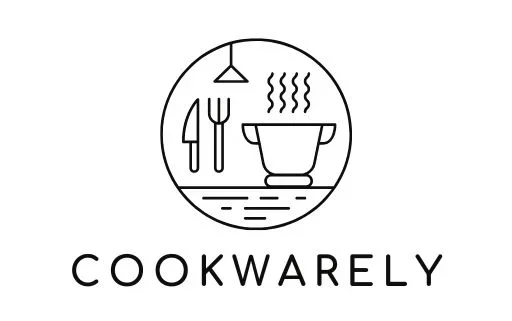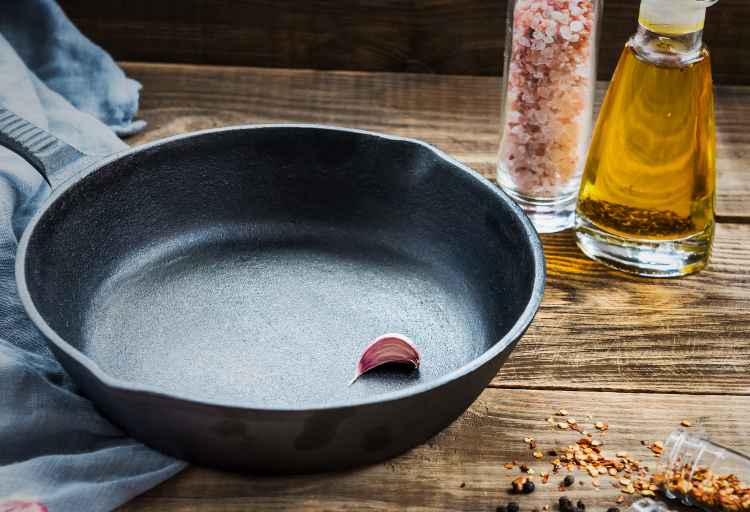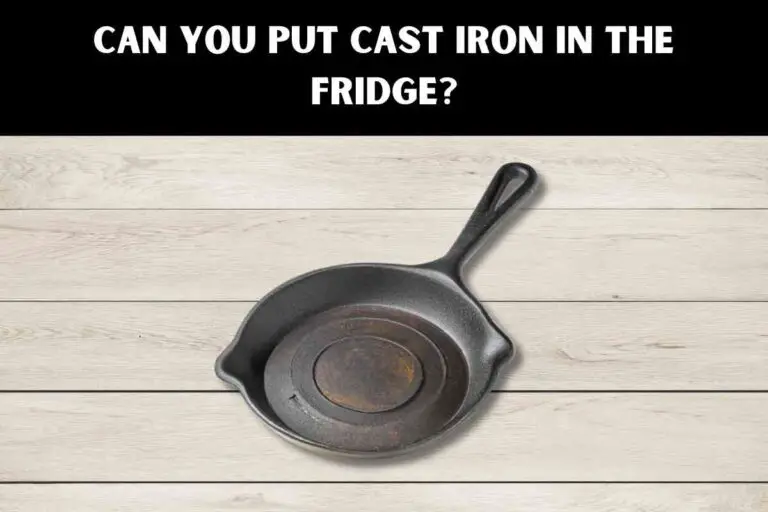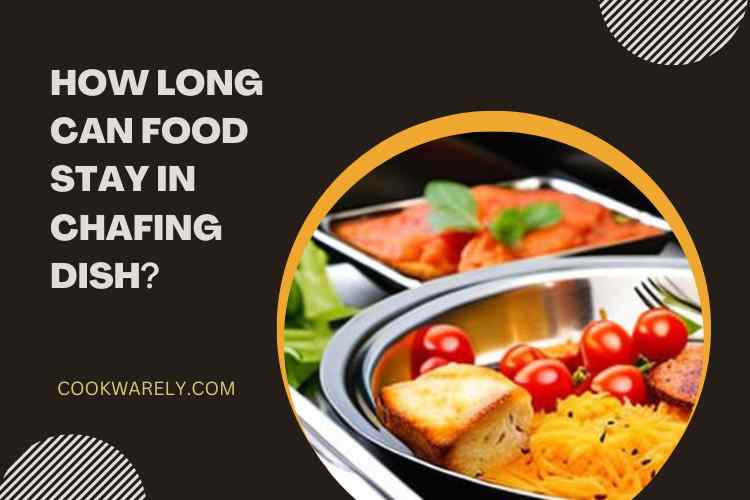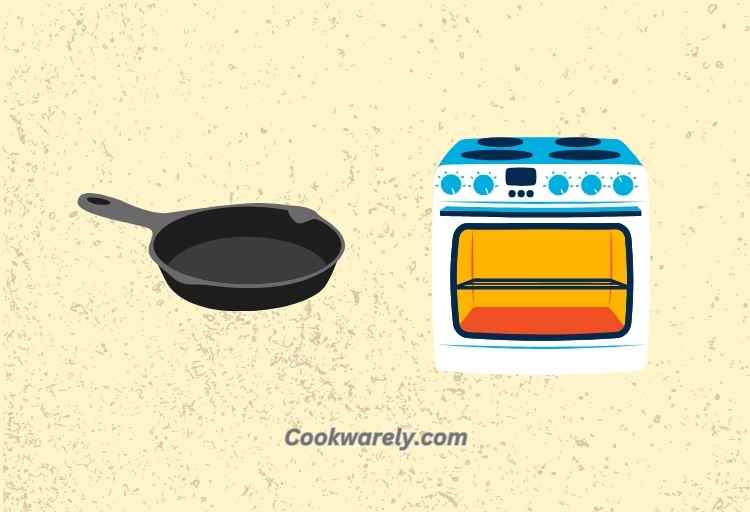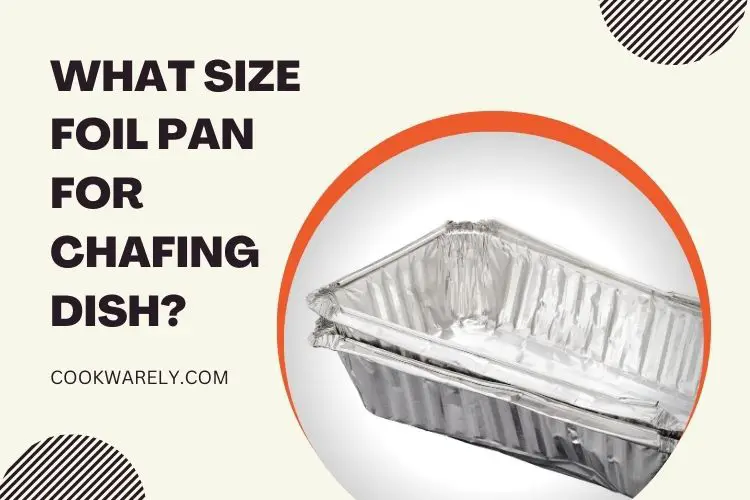Can You Reheat Food in a Chafing Dish?
Reheating food in a chafing dish is not recommended. Chafing dishes are designed to maintain the temperature of already hot food, not to heat cold food to a safe internal temperature of at least 165 °F, which is essential for food safety.
However, reheating food in a chafing dish may take longer than other methods, and the result may not be as hot as desired.
It’s important to consider the type of food being reheated and to follow some basic guidelines, such as preheating the chafing dish and using a lid, to ensure that the food is heated evenly and safely.
It is advisable to use appropriate heating methods such as a microwave, stovetop, or oven for reheating food to ensure it is safe to consume.
Contents
- 5 Factors For Reheating Food in a Chafing Dish
- Key Takeaways
- Five Facts About Reheating Food in a Chafing Dish
- What is a chafing dish?
- Can You Reheat Food in a Chafing Dish?
- Tips for reheating food in a chafing dish
- Alternatives to using a chafing dish for reheating
- FAQs About Reheat Food in a Chafing Dish
- Conclusion
5 Factors For Reheating Food in a Chafing Dish
| Factor | Description |
|---|---|
| Temperature Monitoring | Use a reliable food thermometer to check that the internal temperature of the food reaches at least 165 °F throughout to kill harmful bacteria. |
| Method of Heating | Avoid slow cookers, steam tables, or chafing dishes for reheating, as they may not reach or maintain a high enough temperature to prevent the “Danger Zone.” |
| Time Sensitivity | Minimize the time food spends in the “Danger Zone” (40 °F to 140 °F) by using quick and efficient heating methods like a microwave or stovetop. |
| Even Heating | Ensure even heating throughout the food to eliminate cold spots where bacteria can thrive. Stir or rotate food as needed for uniform heating. |
| Safe Serving Temperature | Serve reheated food above 140 °F, especially in buffet settings, to maintain a safe temperature and prevent bacterial growth. |
Key Takeaways
- Always use a food thermometer to ensure food reaches at least 165 °F internally.
- Don’t use slow cookers, steam tables, or chafing dishes for reheating; they may not maintain safe temperatures.
- Minimize the time food spends between 40 °F and 140 °F to prevent bacterial growth.
- Ensure food is heated uniformly to eliminate cold spots that can harbor bacteria.
- Maintain a serving temperature above 140 °F, especially in buffet situations, to keep food safe.

Five Facts About Reheating Food in a Chafing Dish
- Not for Heating: Chafing dishes are not designed for reheating food; they’re for keeping it warm.
- Slow Process: They heat food slowly, which can prolong the time it spends in the “Danger Zone.”
- Uneven Heating: Chafing dishes can have hot and cold spots, leading to unevenly heated food.
- Risk of Overcooking: Prolonged heating may overcook food and affect its quality.
- Better Alternatives: Use a microwave, stovetop, or oven for safer and quicker reheating; chafing dishes are best for maintaining the temperature of already hot food.
What is a chafing dish?
A chafing dish is a large, rectangular tray heated by a fuel source, usually a small can of gel or alcohol. It has a shallow pan for holding food and a wire rack supporting the pan above the heat source.
Chafing dishes are typically used to keep food warm for an extended time, making them a popular choice for buffets, potlucks, and other events where food is served buffet-style.
Can You Reheat Food in a Chafing Dish?
While chafing dishes are primarily designed to keep food warm, they can also reheat food to a certain extent.
However, a few factors must be considered before attempting to use a chafing dish for this purpose.
First, it’s important to understand that chafing dishes don’t produce much heat. The fuel source provides a low, steady heat intended to maintain the temperature of the food rather than increase it.
This means that it may take a long time to reheat food in a chafing dish, and the result may not be as hot as you would like.
Second, chafing dishes are not designed for cooking food. They don’t have the same level of heat control as a stove or oven, and they don’t distribute heat evenly like a grill or oven.
This means that if you try to reheat food in a chafing dish, you may end up with some hot areas and lukewarm or even cold areas.
Third, it’s important to consider the type of food you are trying to reheat. Chafing dishes are best suited for reheating foods that are already cooked and need to be returned to temperature.
Foods that require cooking or have a lot of moisture (such as soups or stews) may not fare well in a chafing dish.
Tips for reheating food in a chafing dish
Despite the challenges, it is possible to successfully reheat food in a chafing dish if you follow a few guidelines. Here are some tips to keep in mind:
- Preheat the chafing dish: Make sure to turn on the fuel source and allow the chafing dish to heat up for a few minutes before adding the food. This will help the food heat up more quickly.
- Cut the food into small pieces: Smaller pieces will heat up more quickly and evenly than larger pieces.
- Use a lid: If the chafing dish has a lid, use it to help retain heat and speed up the reheating process.
- Stir frequently: Stirring the food will help ensure that it heats up evenly and prevents hot spots.
- Test the temperature: Use a food thermometer to ensure that the food has reached a safe temperature (165°F for most meats). Remember that it may take longer to reach this temperature in a chafing dish than using a stove or oven.
Alternatives to using a chafing dish for reheating
If you’re looking for a faster or more efficient way to reheat food, there are several alternatives to using a chafing dish. Here are a few options to consider:
- Oven or stove: These appliances are much more efficient at reheating food than a chafing dish. Just be sure to use appropriate cookware and follow any safety guidelines.
- Microwave: The microwave is a quick and easy way to reheat small amounts of food. Just use a microwave-safe container and follow the manufacturer’s guidelines for reheating food.
- Slow cooker: If you have a slow cooker, you can reheat food on a low setting. This is a good option for soups, stews, and other moist foods that may not work well in a chafing dish.
FAQs About Reheat Food in a Chafing Dish
How to Light Chafing Dish?
To light a chafing dish, follow these steps: 1) Place the fuel canister in the designated compartment. 2) Use a long lighter or matches to ignite the fuel. 3) Wait for the flame to stabilize before placing the food pan on top.
How to Use Chafing Dish?
Using a chafing dish involves placing a lit fuel canister in its compartment, setting a water pan above it, and placing the food pan with your dish on top. Adjust the flame to keep food warm.
Can Chafing Dishes Reheat Food?
Can You Reheat Food in a Chafing Dish: Chafing dishes are not designed for reheating food; they’re meant to keep it warm. Reheating is better done in a microwave, stovetop, or oven.
Can You Use Chafing Dishes for Cold Food?
Chafing dishes are primarily for keeping food warm. They are not suitable for keeping food cold; use other cooling methods like refrigeration or ice.
When Must You Reheat Food to 165?
Food must be reheated to an internal temperature of at least 165 °F to ensure it’s safe to eat and to kill harmful bacteria.
How to Heat Chafing Dishes?
Chafing dishes are heated by placing a fuel canister beneath, lighting it, and adjusting the flame to maintain the desired food-warming temperature.
Can You Cook with Chafing Fuel?
Chafing fuel is typically used to keep food warm, not for cooking. Cooking is better done with stovetops, ovens, or other suitable appliances.
Conclusion
Chafing dishes serve a valuable purpose in maintaining the warmth of prepared food during service or buffet-style events.
However, they are not suitable for reheating cold food to the recommended safe internal temperature of 165 °F. To ensure food safety and prevent the risk of foodborne illnesses, it is essential to use dedicated heating methods like microwaves, stovetops, or ovens when reheating food.
Chafing dishes should be reserved for their intended purpose, which is keeping already hot food at a safe serving temperature.
